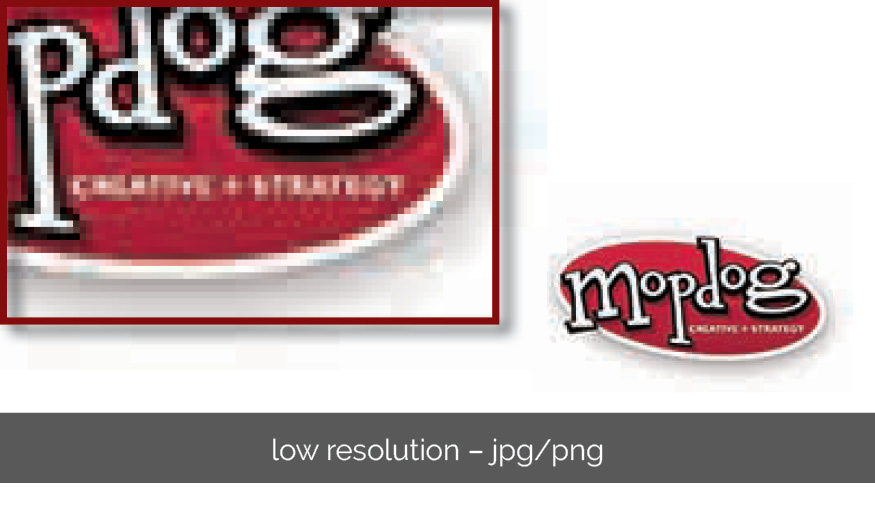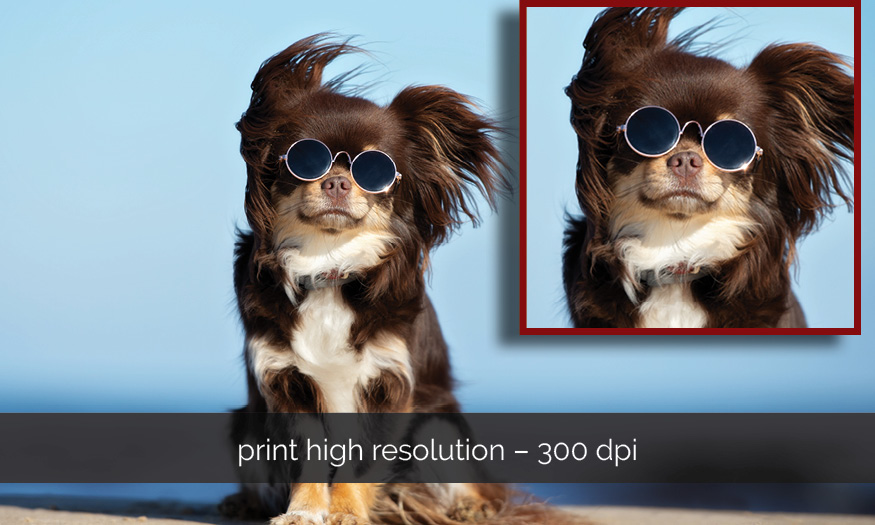What You Need To Know About Image File Types
Images make part of our everyday interaction with media, offline and online. News stories tend to have pictures, and social posts have some type of image. Branding elements like business cards have logos, email signatures can have icons, websites have graphics and so much more.
Because digital media provides us a quick way to edit and share information through different platforms and programs, we may skip essential steps when curating content. For example, how aware are you of the types of files and where they should be used? Have you noticed that sometimes images do not have the best quality and show up a bit fuzzy, pixelated or just not ok?
To ensure you always share the most visually appealing and informative content, we have compiled a few facts about different image file types, and other characteristics, and how to best use them.
Image Types
Different image file types/formats serve different purposes. We are discussing the most common types of files that you may use, raster and vector files.
Raster Files are made up of individual blocks of color (called pixels) and have a particular size. Because pixels have a defined proportion based on their resolution, they become distorted when stretched to fill space.
Raster File Extensions:
- JPEG (best for web Images, Non-Professional Printing, Email, PowerPoint)
- GIF (best for web Images)
- PNG (best for web Images)
- TIF (best for high-quality prints, professional publications, archival copies)
Have you ever encountered a picture online or in print that looks fuzzy or pixelated? Chances are a small-file image was used and possibly stretched, causing its distorted look, like the example below.

Vector Files are made up of proportional formulas rather than pixels. These types of files are usually logos, charts, icons and any other hard-edged graphic. With vector files, you can place your image on a notecard, a poster, a billboard and pretty much anywhere you need to have your graphic because you can scale them to any size.
Vector File Extensions:
- EPS (best for vector artwork, illustrations)
- AI (best for vector artwork, illustrations)
- SVG (best for vector artwork)
The example below shows a vector file. Notice how the quality remains the same, even as the image size has changed.

Please note: To manipulate a vector file, you need to use design software.
Image Resolution
Resolution determines the quality and size of an image. It is described in DPI and PPI (dots per inch and pixels per inch), and it is highly influenced by the final mode of delivery of an image, i.e., print or web.
The higher the resolution, the higher the number of pixels or dots per inch, creating a high-quality, crisp image like the one below.

The lower the resolution, the lower the number of pixels or dots per inch, creating a low-quality image like the one below.

When it comes to presenting images, websites can show images at a lower resolution (about 72dpi). Printed files, however, should have a higher resolution (around 300dpi), to ensure the final product has the best quality possible. Regardless of the final destination of an image, you should always try to obtain images with the highest quality possible.
Tips for Saving Images
Raster: Save images to the largest size possible. You will be able to make them smaller without losing quality, but you will not be able to make them bigger. That will stretch the image and distort its quality.
Vector: Make sure you always save and keep a master vector file. Again, you need to use design software to manipulate or save files.
Tips for Sending Images to a Designer
- Send images as separate files. Images in a Word document or Google Doc will not be usable for a designer, although they might be helpful for reference.
- Send a large image to ensure the highest quality. Use upload software to transfer the images, since the file will most likely be too large for email.
- Send logos as vector files. This allows the designer to manipulate the individual elements and make edits as needed.
At Mopdog, these are some of the ways we use images:
- Online/Mobile – Website, HTML Email, Advertisement
- Print – Brochure, Direct Mail, Flyer + Sell Sheet, Advertising, Trade Show & Event Collaterals, Packaging, Photography
- Brand Design – Brand Design, Business Pack, Collateral, Social Media Graphics
Dealing with images does not have to be a complicated process. Our design department is ready to help you create graphics that will make your organization stand out. Contact us. We are here to guide and provide you with high-quality work support.
Sources:
Different Types of Image Files
Thanksgiving with the Mopdog Pack
The pack got together to share about what we are thankful for as well as our…
Read MoreArt, Community and Fun: Supporting the 2021 Chalktoberfest
Chalktoberfest is an excellent start to the fall season, and our pack was very excited to…
Read MoreWe Would Love to Hear from You.
3104 Creekside Village Drive, Suite 507, Kennesaw, GA 30144
New Business
William Musial
[email protected]
678-737-7333
Media Relations
Cheryl Musial
[email protected]
678-737-7325




